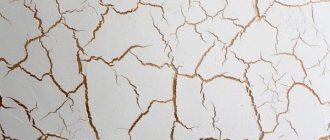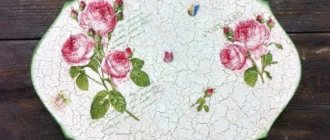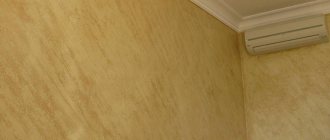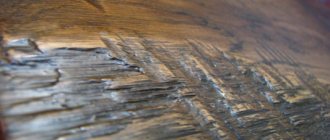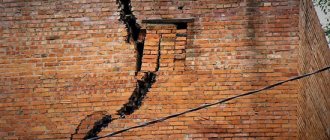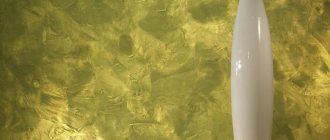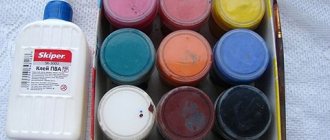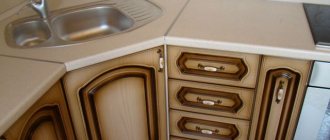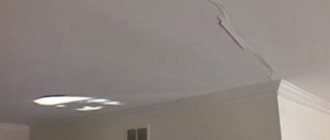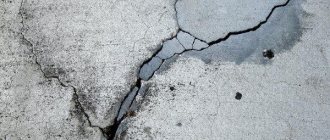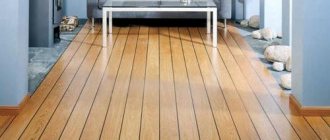The terms “Crackle” or “Crackelure” are familiar to every experienced ceramist, but beginning craftsmen have many questions regarding their interpretation. The meaning of the word “Crackelure” can be found in any dictionary, especially since you can examine the etymology of the word in detail and formulate a definition based on the data obtained.
Unfortunately, this is unlikely to reduce the number of questions. Here you need a consultation with an experienced ceramist or, at a minimum, a full-fledged article that reveals the entire essence of the above concept, from its meaning to methods of production.
The first problem arises when the reader tries to compare the interpretation of the terms “Crackelure” and “Tsek”. Indeed, their definitions are similar in meaning. But the main paradox is that the novice craftsman does not understand whether craquelure is a defect caused by a violation of the ceramic firing technology, or whether it is one of the ways to decorate the product. We will try to clarify and answer the questions raised.
General meaning of the term
Craquelure or craquelures are cracks that appear in varnish or paint. Usually the reason for their occurrence is the action of time. Such cracks can be observed on old pottery or ancient paintings. Another reason for cracking of a layer of varnish or paint is failure to comply with storage conditions or a sharp temperature change. Craquelure is observed locally or covers the entire surface. If we talk about painting, then there are deep cracks running through all layers of paint. But sometimes only the top layer cracks. Something similar occurs in ceramics.
The word “Crackelure” came into the Russian lexicon from the French language (craquelure), but it has English roots. The term comes from the verb to crackle - “crack”.
Craquelures have been known to craftsmen since ancient times. But in the Middle Ages, cracking was perceived solely as a surface defect, so varnishes were created that would maintain the integrity of the surface over a long time. Time has shown that it is simply impossible to completely avoid cracks.
Based on the picture provided by the craquelure, experts determine the age of the clay product, as well as the place where it was made. Art historians have developed a number of criteria for assessing cracks. A special role is played by shape, size, direction and thickness.
To get rid of craquelure, artists strengthen the paint layer. The canvases are stored under strictly defined conditions (temperature and humidity). But craquelure can also be created artificially. This is especially popular in the manufacture of ceramics. The technique of creating artificial cracks originated in China around the 1170s. In Europe, the fashion for crackling appeared only in the 18th century. In France, a special varnish was invented that was applied between layers of paint, after which cracking was observed.
Features of working with craquelure varnish
Each master has his own secrets in his work, thanks to which his works have their own unique style, distinguishing them from the works of other masters. But still, there are basic rules and subtleties of working with craquelure varnish that more experienced craftsmen know about, but beginners may not know.
Here are a few of them:
- Before using single-phase or two-phase varnish, be sure to carefully read the instructions
- When working with craquelure technique, always use a synthetic brush.
- The thicker the consistency of the varnish, the larger the cracks.
- When using a one-step varnish, use only a matte second coat of paint, since many glossy paints and metallics often swell rather than crack.
- It is better to apply a layer of paint on a one-step varnish with a sponge, so the pattern of cracks will be more accurate.
- Try not to apply paint twice to the same place.
- The consistency of the paint should not be very thick or very liquid; it is advisable to use the consistency of liquid sour cream.
- If you use a brush in your work, then apply the composition continuously in one direction.
- When using two-step craquelure, apply the second layer on a slightly sticky layer
- Cracks must be rubbed to make them appear brighter, using bitumen, pastel, oil paints
- Some compounds, after rubbing cracks, must be washed off with warm running water and only then apply the final varnish
- Do not shake varnishes before use.
- It is advisable to carry out all work in a clean, dry and well-ventilated area.
- It is advisable to dry the layers without using a hair dryer. It is better to place the work to dry next to the heating element
So, these were the main points that it is advisable to use when working with craquelure varnish. Only after trying this technique several times will you be able to master its subtleties and reveal all the facets of its attractiveness.
Thanks to the use of craquelure technique, your works will become more interesting, with a slight touch of noble antiquity and will acquire a unique charm.
Tsek or craquelure
Tsek or tseka in the ceramist's dictionary means hairline cracks that appear on the varnished surface of ceramics. The reason for the formation of the ceque is the discrepancy between the coefficients of thermal expansion of the materials of the shard and the glaze. Already during cooling after firing, small cracks may form on the surface of the product. You can fight against cracks, and experienced ceramists know many ways not only to prevent the appearance of cracks, but also to get rid of those that have already formed.
Despite the similarity of definitions, ceramists still distinguish between the concepts of tsek and crackle.
- They call craquelure decorative cracks that were made specifically as decoration.
- The block is a defective piece of ceramics, and its cracks were not intended by the master.
According to some experts, cek differs from craquelure in that it has a larger pattern and long cracks, which are far from attractive in appearance. Crackle – small and uniform cracks.
There is another important point that distinguishes the two concepts. If the tsek is defective, then ceramic vessels cannot be used as tableware. Deep cracks can trap food and lead to bacteria growth. Ceramics coated with craquelure can be used as tableware if the cracks are repaired. A coloring pigment is rubbed into them, and they are filled with glaze on top and fired.
Types of varnishes and paints craquelure
To produce cracks, so-called two-step and one-step craquelure types of varnishes and paints are used. Two-step craquelure varnish from different manufacturers is produced in a set of two jars, and one-step varnish is produced in one.
When you choose craquelure paint in a store, look at the drying time recommended by the manufacturer. If your bedside table needs to be irresistible by tomorrow morning, then a varnish with the shortest drying time is suitable for you.
One-step craquelure varnish is an interesting decorative finish that imitates cracked paint on the surface of an object.
Two-step craquelure varnish is mainly used to cover the surface of furniture decorated with painting. It will perfectly age the surface and design.
One- and two-component craquelure compositions in aerosol cans are a modern finishing material that is quickly applied, is wear-resistant and does not require maintenance or finishing varnishing.
How to get craquelure
There are several theories explaining the appearance of craquelure. According to one of these theories, the “jacket” of the fired product, that is, its glaze, is “too tight” for the shard. An analogy can be given using the example of a man whose shirt is too small. Just as clothes tear, so does the glaze layer. This is usually observed during the cooling stage after glaze or overglaze (decorative) firing. The time at which cracks will appear cannot be predicted. With equal probability they can appear both in a year and in a hundred years. Thus, craquelure on ceramics does not at all mean that the product is distinguished by its “venerable” age.
Earthenware and majolica almost always become cracked over time. Products that experience constant vibration and temperature changes are especially susceptible to cracking. For example, frequent washing with hot water can cause craquelure to appear. It is difficult to get artificial cracks in porcelain, but defects in the form of a crack form quite often. One has only to increase the rate of cooling of the product after glaze firing, and an uneven temperature change will immediately occur on the surface and in the depths of the shard.
In the classical theory, it is believed that such a defect is observed when the coefficients of thermal expansion of the glaze and the shard do not match. As a result of different shrinkage, the glaze experiences mechanical stress, leading to layer ruptures. But there is another version that can serve as a guide for obtaining artificial crackle. The essence of this version comes down to the fact that it is not a matter of CTE indicators. In a two-stage earthenware firing scheme, waste firing is carried out at high temperature. During this period, the clay shrinks to its maximum, and the size of the shard after firing remains practically unchanged. During glaze firing, the glaze undergoes fire shrinkage. This explains the fact that the “shirt” becomes “small”.
The craquelure mesh is called “the charm of extreme old age,” emphasizing the peculiar beauty of the artificial defect. Today, the master does not need to disrupt the firing technology, since there are special glazes that, after heat treatment, give a fine craquelure. The advantage of such glazes is that a crack forms only in the top layer, while the shard remains solid and waterproof.
What is craquelure effect?
From French craquelure
is read as
craquelure
- the effect of cracks on the surface.
crackle
is also found (from English
crackle
- crackling, crackling, crunching). Therefore, the craquelure effect implies the effect of cracks on the surface.
Craquelure appeared when paint dried out and cracked over time, for example on paintings. Or the product itself, for example, vases, jugs, aged, forming the finest cracks on the surface.
Manufacturers have created a paint recipe with a cracked effect, thus artificially aging the product or giving it a decorative effect.
Modern craquelure paints are applied to wood, glass, concrete, metal, and plastic.
Snow crackle
The appearance of craquelures depends on the composition of the glazes. Ceramists gave each glaze, which can be used to create small cracks, its own name. Snow Crackle is one such glaze. The technique of applying glaze allows you to create cracks not only in the plane of the surface, but also in the perpendicular plane. This effect is achieved by forming a sufficiently thick layer. The craquelure cells are regular hexagons, which is why the glaze is also called “turtle shell”.
To obtain a three-dimensional picture, it is necessary to apply several layers of glazes, each of which must be fired. To control the pattern or size of cracks, it is necessary to have some knowledge of the coefficients of thermal expansion of materials and their compatibility. The glaze contains elements such as sodium oxide and magnesium oxide. They have different CTE, so by dosing the components you can adjust the total coefficient.
Glaze “Snow crackle” is applied in a layer up to 6 mm thick. After firing, cracks are often not observed. It is necessary to wait several days for a stable picture to form. Since glaze breaks are not repaired, such products are not recommended for their intended purpose, that is, they perform an exclusively decorative function. Many beginning craftsmen limit themselves to glazing the surface on only one side.
In the vast majority of cases, this will lead to the occurrence of high stresses and, as a consequence, to the destruction of the shard. On the edges of the product, the layer of glaze becomes thinner after firing. As a result of the mass flowing from the edge to the middle of the shard, the dark color of the clay material begins to be visible through the glaze. In the case where no additional layer is applied to the edges, the dark border is called the “purple lips” effect. The specificity of crackle is that relief cracks are more clearly visible on concave surfaces, so the outer surface is covered with regular glaze, and the inner surface with “Snow Crackle” glaze.
One-stage craquelure: step-by-step instructions
One-step, one-step craquelure varnish imitates a painted surface where the paint layer has cracked over time. The resulting effect will allow you to turn a modern piece of furniture into a valuable antique item.
A layer of this varnish is applied between two layers of acrylic paint, causing the top layer of paint to crack.
The proposed master class on craquelure will help beginning craftsmen master the basic techniques of this decoration.
You will need:
- acrylic paint of two colors;
- flute brush for painting and applying varnish;
- one-step craquelure varnish;
- acrylic primer.
One-step craquelure for beginners is one of the simplest types of decor. Follow the step-by-step instructions and you will succeed:
- Using a soft synthetic flute brush, apply the craquelure varnish in an even layer of medium density. Wait for it to dry. The drying time for the varnish is specified by the manufacturer, follow the recommendations.
- Then, using a clean brush, apply a top coat of medium-weight acrylic paint in a contrasting or component color.
- As the top coat of paint dries, cracks will begin to appear.
- Protect the surface with a crackle effect with water-based varnish, but not earlier than 4 hours after the top coat of paint has dried.
Glaze ETSP-03 crackle
Glazes of the ETSP series are transparent colored materials that can be used to obtain surfaces decorated with craquelures. They come in powder form and are diluted with water. The main feature of the glazes is that they do not contain lead. The consistency of the final solution depends on the porosity of the shard, as well as on the glazing method. It is recommended to first test on a test product, diluting the powder with water in a ratio of 1 to 0.8, respectively.
When obtaining a solution, the powder is added to the water in small portions. The mother liquor should look like thick sour cream, and then the required amount of water is added to it. It should be remembered that the higher the porosity of the shard, the more liquid the solution should be. When spray glazing, more water must be added to the glaze. ETSP glaze is fired at a temperature of 980 – 1080 degrees.
The glaze must be applied to the scrap. The surface is pre-prepared: it is cleaned of dust and dirt. The presence of tiny particles will result in a defect in the vitreous coating. The glaze can be applied with a brush, and its shape does not matter. The main thing is that the wax is soft. The number of layers of glaze depends on the thickness of the coating you want to achieve. The outer layer will crack after firing. When using multilayer technology, you must wait until each layer dries.
Craquelure on two-layer glaze
In the absence of special glazes, crackle can be obtained using conventional glazes using two-layer technology. The essence of the method is that two layers of glaze are sequentially applied to each other. The first layer covers the salvaged shard and is fired. Plastic clay or alumina hydrate is added to the glaze of the second layer to increase shrinkage. Shrinkage of the top layer occurs already during the drying process. If crackle is not observed, then cracks will certainly appear after firing, as the glaze will begin to decrease in volume, which will lead to the formation of breaks. The only disadvantage of this technology is energy consumption. Two firings are required, excluding the waste firing.
From a technical point of view, the formation of craquelure is explained by the fact that the top layer of glaze is pre-prepared. To increase shrinkage, wood ash is added to the glaze suspension. To grind it, it is recommended to sift through sieve No. 008. The share of ash should be about 1% of the total mass of the glaze. The layers also differ in the method of application. If the first layer is applied by pouring or dipping, the second must be applied by spraying. The detailed algorithm for preparing the suspension and glazing is as follows:
- First, glazes of different colors (for example, black and white) are prepared with a moisture content of 45%.
- Wood ash is added to the black glaze in the indicated proportions.
- The surface of the shard is covered with white glaze (applied by pouring).
- The glaze is dried (the need for firing is determined depending on the type of glaze).
- The shard is covered with black glaze (spraying).
- The product is fired at a temperature of 1100 degrees.
As a result of deformation of the top layer, the glaze breaks. Cracks form through which the white layer is visible. If desired, you can use the same technology, but swap the glazes. Then black craquelure will form on the white background.
In order to turn a ceramic defect into real art, a certain amount of experience is required. Ceramists have learned not only to control the shrinkage of materials, but also to set the direction of mechanical stress, which determines the direction of cracks. “Aerobatics” is considered to be the production of a mesh not from chaotic cracks, but from small strips that create a cell of the correct shape and the same size.
Two-stage craquelure: step-by-step instructions
Two-step craquelure finishing is a two-step varnishing process, resulting in small cracks that need to be emphasized with a contrasting color. The crackling kit consists of a slow-drying varnish (first step) and a fast-drying varnish (second step).
Before finishing crackle, wooden furniture is carefully primed and painted, otherwise the first layer of varnish will “go” into the pores of the wood and cracks will not form.
In order to master this decorative technique, we suggest that you read the step-by-step instructions and take a master class with two-step craquelure:
You will need:
- fluted synthetic brush for coloring;
- two flute synthetic brushes for varnishing;
- acrylic paint;
- two-step craquelure varnish;
- colorful pigment umber;
- cotton cosmetic pad or napkin;
- cotton fabric.
Craquelure in decoupage is one of the most popular decoration methods, which is used in every second decoupage project.
The surface of the tray, pre-painted in two layers with acrylic paint and decorated with a napkin using the decoupage technique, will be coated with a two-step craquelure varnish.
- Using a varnishing flute, apply the first layer (first step) of craquelure varnish. Spread the varnish in an even layer of medium thickness. Wait for it to dry. You can dry it with a hairdryer.
- Using a clean flute brush, apply a layer of another varnish (step two). It should be smooth and of medium thickness. Apply it quickly, in parallel movements, without removing the previous layer. Need to dry it with a hairdryer.
- After the second layer of another varnish dries, cracks will appear. To clearly identify cracks, rub a contrasting color pigment into them.
- Rub the pigment into the surface using a paper towel in a circular motion.
- Remaining pigment must be removed with a cotton cloth.
- If the surface of an object made using the crackle technique is prone to abrasion, then after the second step varnish has completely dried, coat it on top with a water-based finishing varnish or a composition recommended by the varnish manufacturer. This should be done no earlier than 4 hours later.
If this varnish is water-based, rinse the brush with water. Drying time for varnish varies, so follow the manufacturers' recommendations. The varnished surface can be dried with a hairdryer, but not with hot air.
